Canada’s Icefields Parkway in Alberta has been rated as one of the world’s most beautiful drives…and it’s easy to see why. In a single day’s drive from Lake Louise, you’ll take in wide open vistas framed by snow-capped mountain peaks and watch generous waterfalls tumble from great heights.
The Icefields Parkway is home to dozens of spectacular color saturated blue mountain lakes. And you can even walk on a glacier.
Ready to hit the road?
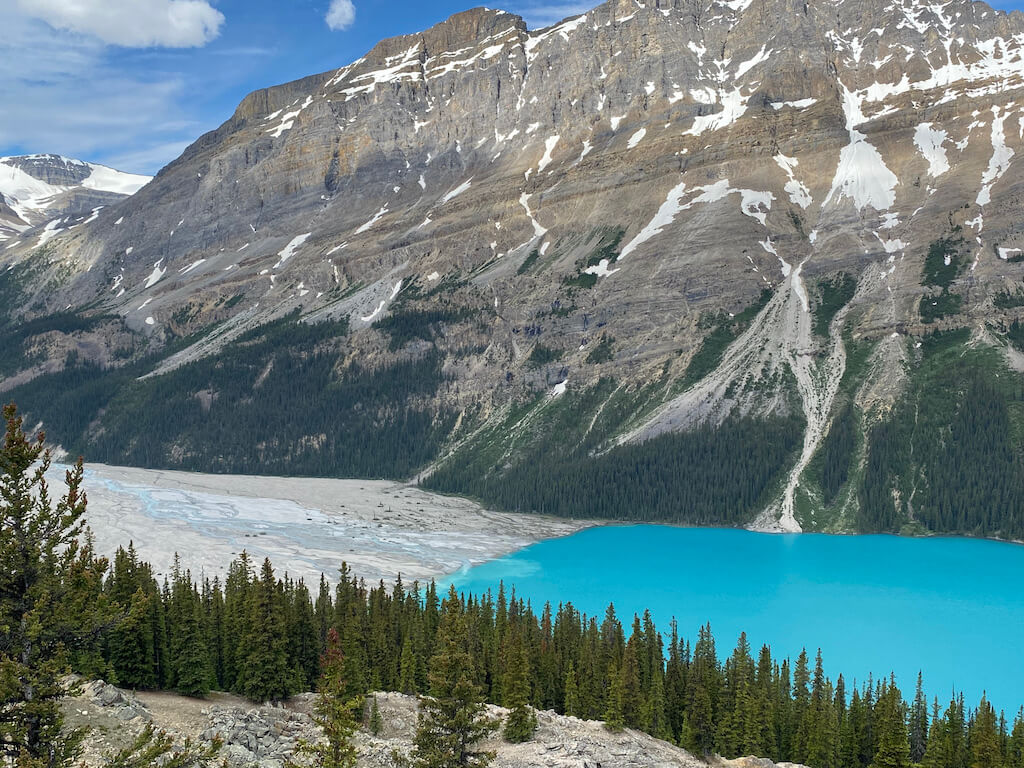
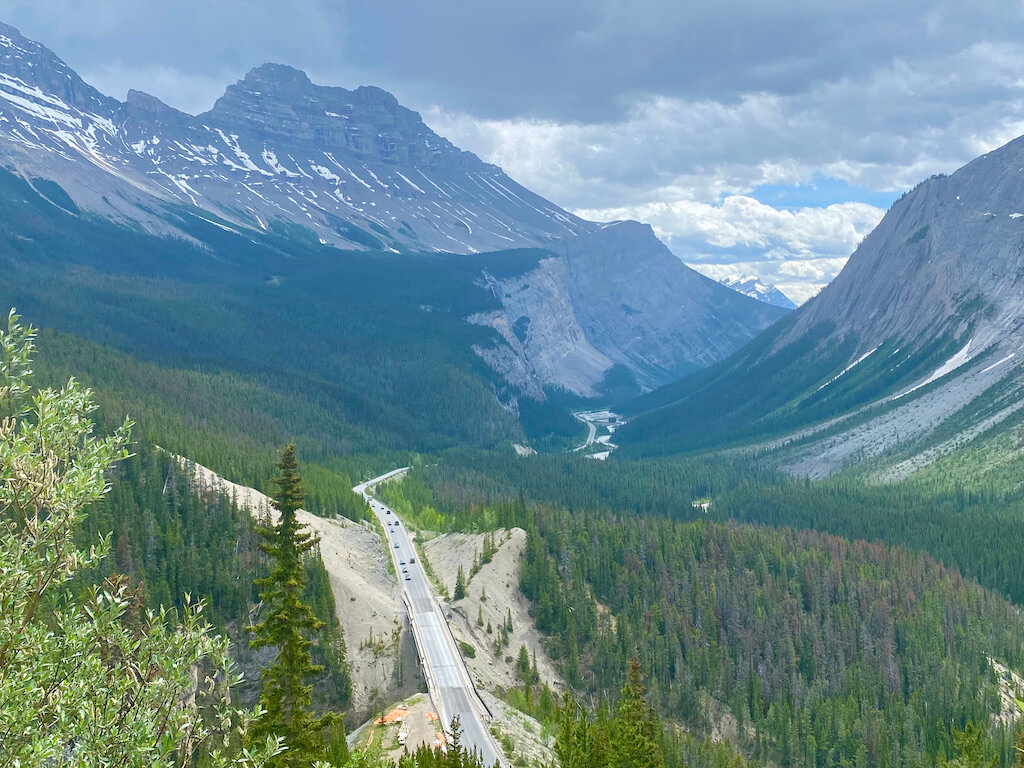
Best Icefields Parkway Stops
If you’re doing this drive as a day trip from Lake Louise, you’ll want to get an early start and plan on a minimum of five hours round-trip…more time if you’d like to hike or explore these areas.
That will allow you to make it about half way along the parkway to the Columbia Icefields, which is one of the most dramatic stops on the parkway.
It’s honestly an all day adventure.
While it’s only 1 hour 45 minutes to the Icefields from Lake Louise, you’ll want to include time for plenty of stops along the way, including a few short walks, and perhaps a picnic.
Today is all about the journey, not the destination!
Also, it’s important to know that you could spend a lifetime exploring the many beautiful hikes here.
Even if you’re heading all the way to Jasper todday, you still won’t have time in a single day to fully explore all of the stops below.
However, you can still see some unforgettable places in a first visit!

1. Herbert Lake
Herbert Lake, just a few kilometers from Lake Louise, is your first peek at the lovely glacial lakes you’ll find on today’s drive here.
On a clear day with little wind, the reflections in this lake are astounding.
You’ll fid a short loop around the lake here (under a mile) which can be a great place to stretch your legs and escape the crowds you’ll encounter at more popular spots along the parkway but this is definitely an optional stop if time is at a premium today.
You can also just make a quick roadside stop here for a photo of this lovely spot.
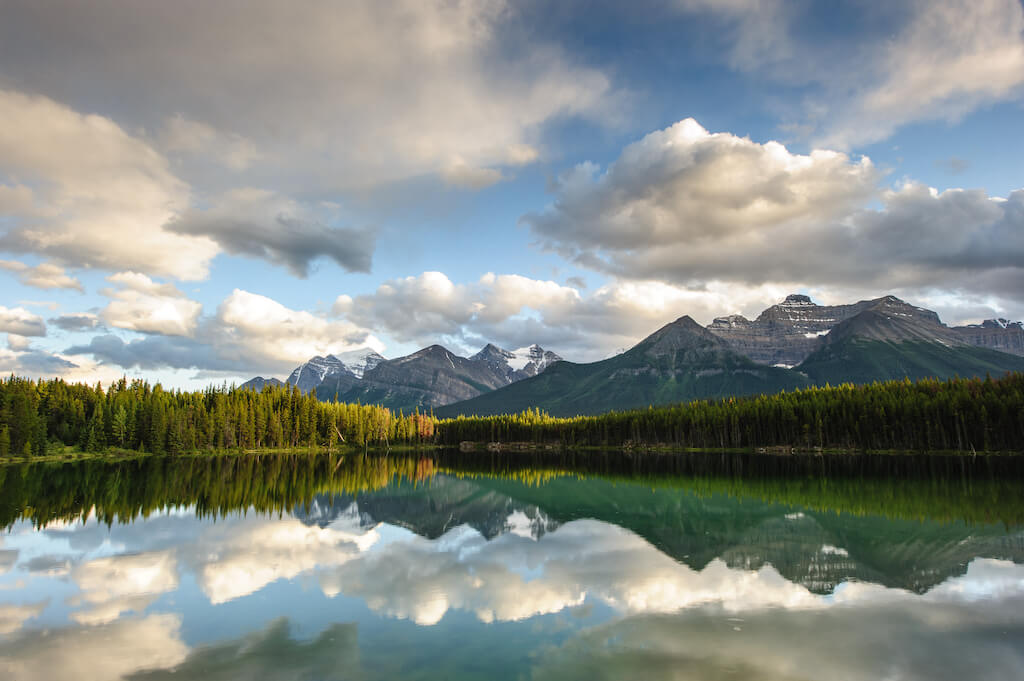
How to Rent a Car in Canada
My top two recs are:
1. Discover Cars has no hidden fees, 24/7 customer service, and free cancellation. They search all the major rental car companies so you don’t have to.
Check price and availability on rental cars here.
2. Turo is like Airbnb for cars. It saved us $$$ during the pandemic on Canadian Rockies trip when rental car prices were sky high.
2. Hector Lake
Hector Lake is the largest lake in Banff National Park, named after Dr. James Hector, leader of an early expedition here.
It would take a few hours to walk down to this lake so it’s best to admire from the viewpoint on the highway.
However, it’s another great spot for a day hike with more time.
Surrounded by the Waputik Range to the west, this area was one of the first campsites by early explorers, Collie and Wooley, who hired a local guide—Bill Peyto—to help them find their way through the pristine wilderness way back at the turn of the 20th century.
It makes another great stop at the viewpoint for a photo.

3. Crowfoot Glacier
Crowfoot Glacier Viewpoint is a must stop!
This is a hanging glacier. In other words, it sticks to the side of a mountain, Crowfoot Mountain, to be specific. Can you see the crowfoot shape?
This crowfoot used to have three “toes” rather than the two it has today.
It’s lost an entire lobe of ice as the glacier has retreated, sadly.
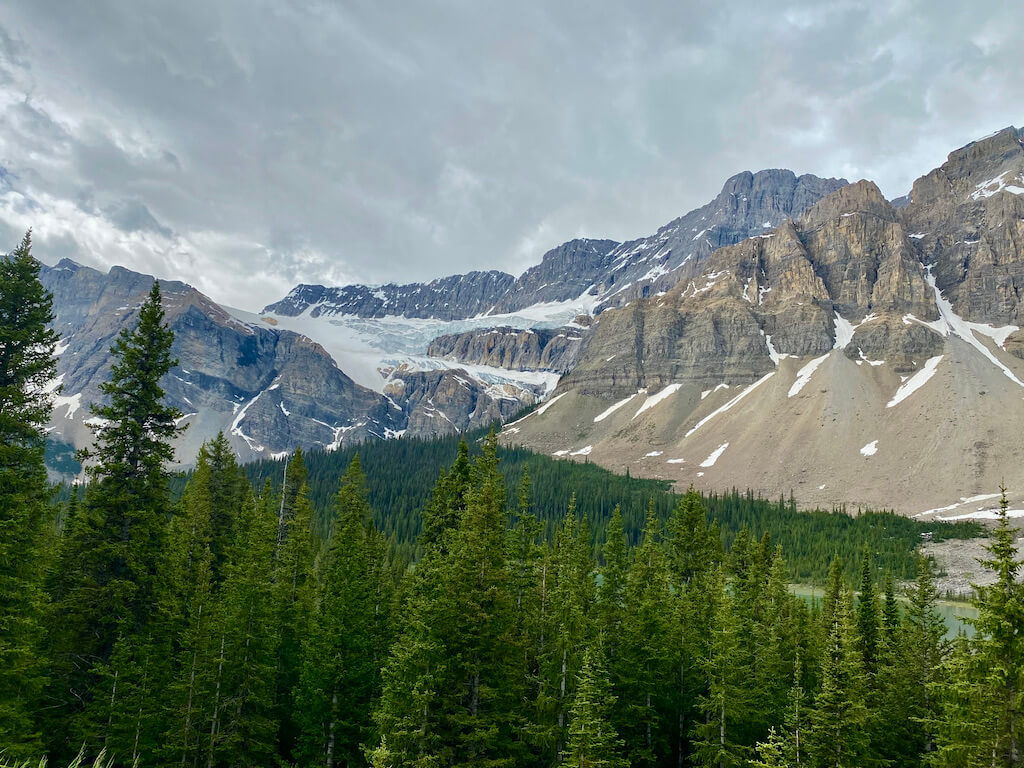
Read more on Canada travel:
• The Ultimate 3, 5, or 7 Day Banff Itinerary
• 27 Things You’ll Need on Your Road trip
4. Bow Lake
Bow Lake here is framed by Bow Glacier. Some of the water in Bow Lake—melt from the glacier—flows all the way to the Bow River that bisects Calgary, 136 miles away!
You’ll find the historic Num-Ti-Jah Lodge on the shore of Bow Lake, at the foot of Mount Jimmy Simpson, an outfitter and yet another early explorer of the Canadian rockies.
The cafe at this red roofed log cabin lodge is open to visitors for light snacks and fresh backed goods.
Plus, there’s a gallery with local Indigenous art.
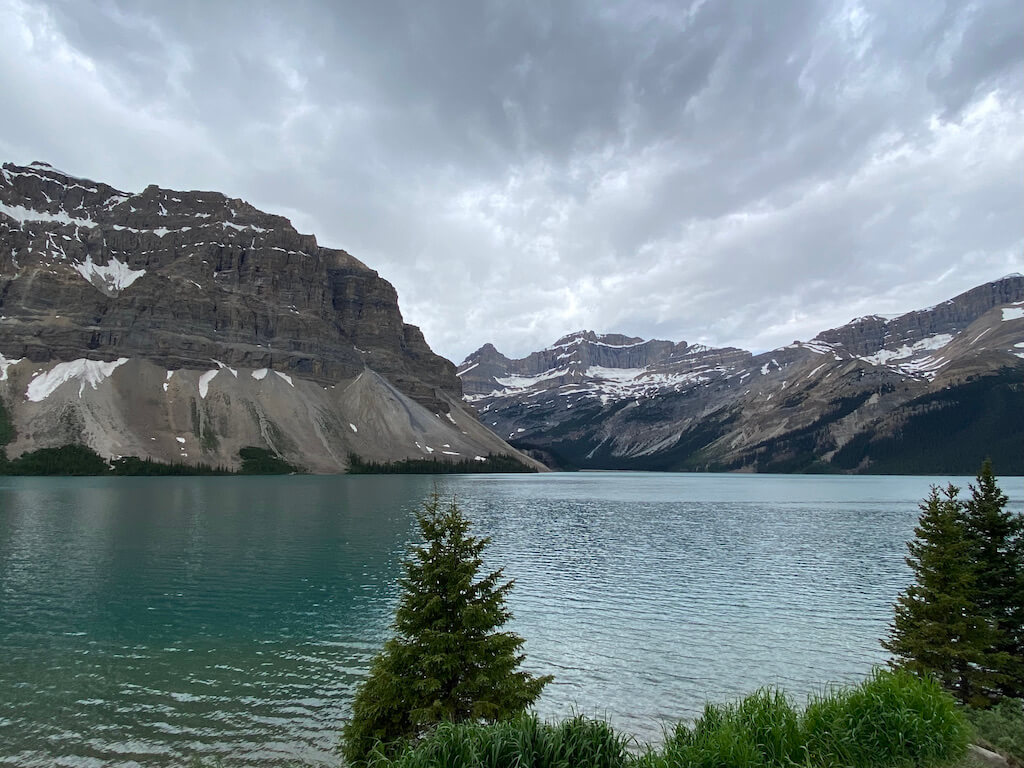
5. Bow Summit & Peyto Lake
Bow Summit is the highest elevation point on the whole Icefields Parkway at 6,787 feet. Don’t miss it!
And at the top, with nice weather, you can enjoy a fantastic view of the most dramatic lake you’ll see today in the Canadian Rockies, famous Peyto Lake.
It was named after Bill Peyto, an English immigrant who became a respected guide in these parts due to his reputation for exploring some of the most dangerous areas in these parts.
Peyto Lake can be a truly brilliant blue if it’s a sunny day.
That’s because rock flour—dust from the glacier—disperses into the lake where it’s suspended.
The rock flour absorbs most of the sunlight, except for the blue spectrum of color ,which is then reflected back.
Pull into the Peyto Lake turnoff and into the parking lot for a short walk to the viewpoint above the lake.
A few words about visiting: First, know this is one of the most popular stops on the parkway!
If you’d prefer not to be elbow to elbow with other visitors in July and August, get here by 8 am or so.
You’ll find restrooms here, but if you see a line for them, consider heading down the road instead as restrooms are plentiful at nearly ever stop along the parkway.
Also, you’ll be walking slightly uphill through a small forest to the viewpoint so expect mosquitos.
This was the only place we really noticed them along the parkway but they were out in force!
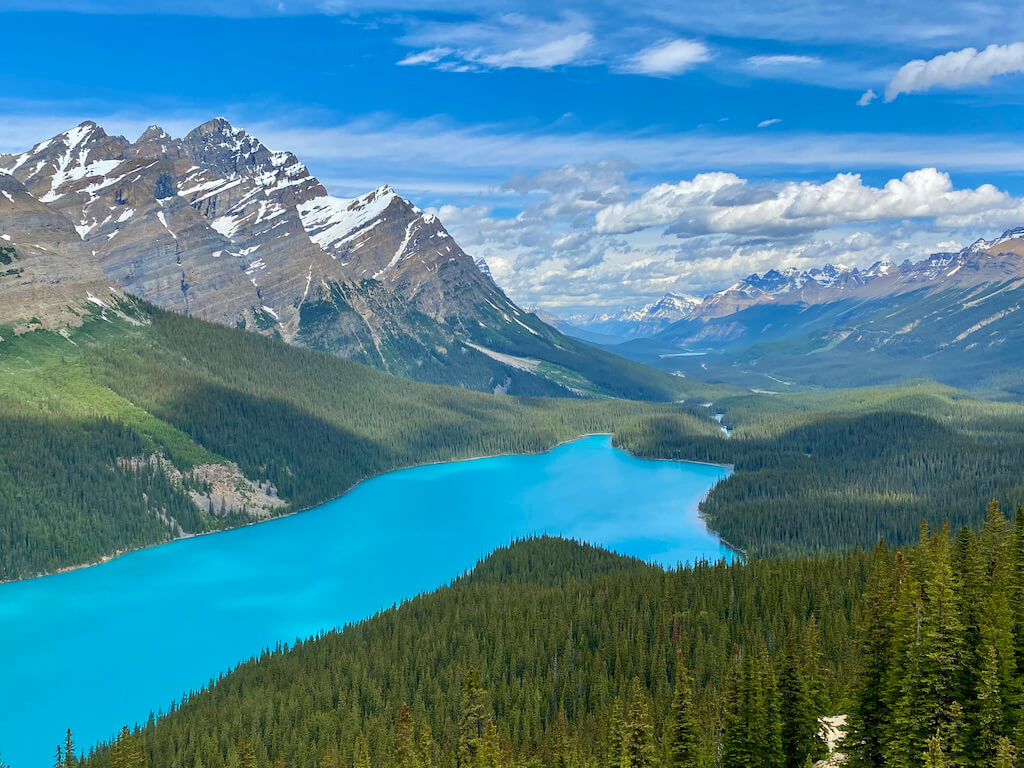
Map of Best Stops on the Icefields Parkway
How to use this map: This map is an image. Click the map to open an interactive version of the map. From there, if you click “open in my maps”, you can add this to your Google maps. Just click the tiny transparent star to the right of the map description to save it in “your places.” Go to “your places” next and there it is!
6. Waterfowl Lakes
The blue-green Waterfowl Lakes in the Mistaya River Valley are two small lakes that include one of the largest campgrounds on the Icefields Parkway.
Campers flock here for the forest, creekside, and lakeside sites.
You’ll notice the big pyramid-shaped mountain just behind the lakes.
That’s Mount Chephren (pronounced “Kef-ren”), a favorite home to female grizzly bears. They appreciate the marshy areas with abundant food and lack of foot traffic.
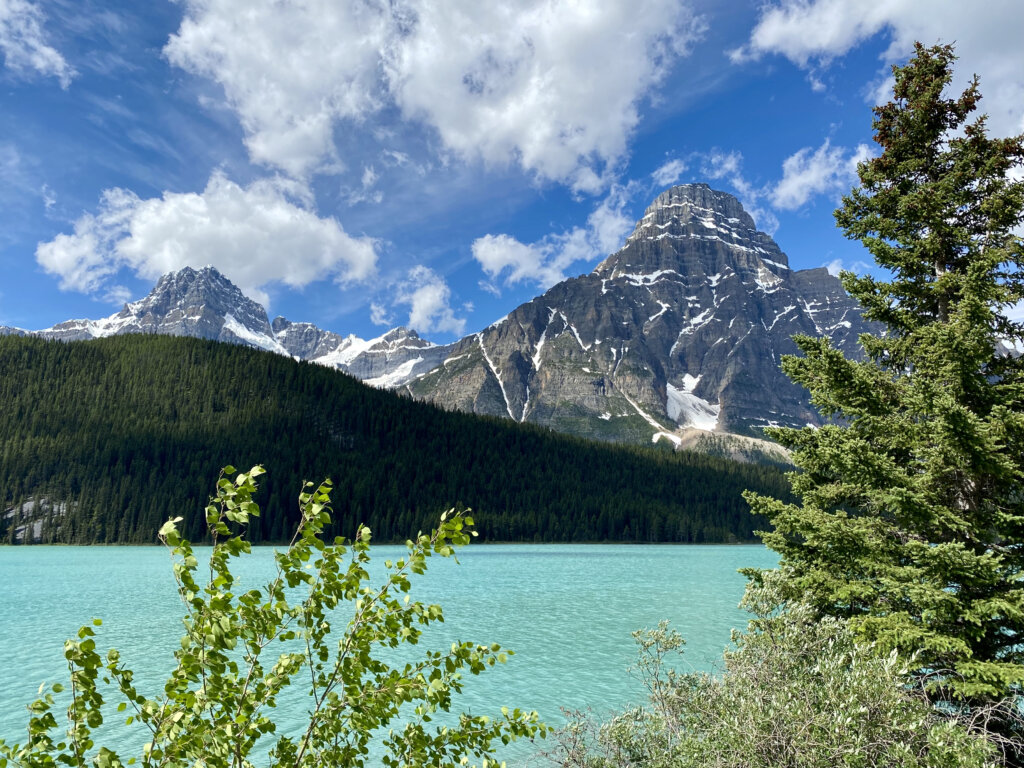
My Top Tips for Driving the Parkway
1. Get gas in Lake Louise. There’s only one place on the whole parkway to buy gas—Saskatchewan River Crossing—and you’ll want to avoid the price gouging there.
2. Pack snacks and a picnic—Food options are similarly limited. But there are some incredibly scenic spots for a picnic lunch!
3. Don’t worry about restrooms—There are clean outhouses at nearly every stop! Only the Icefields Center and Saskatchewan River Cross Resort have facilities with running water though.
4. Respect wild animals—You endanger yourself and wildlife when you get out of your car, leave food out at campsites or in backpacks, or drive over the speed limit. Bears that lose their natural fear of humans become habituated food seekers and must often be destroyed.
5. Dress in layers—In the Rockies, you can get all four seasons in a single day! It could be bright and sunny at Lake Louise with thunder showers an hour down the road. Plan accordingly.
7. Mistaya Canyon
Don’t miss a stop at Mistaya Canyon!
This natural wonder can be accessed via a 1.1 mile loop trail. It’s an easy trail but also a bit steep to get down to the bridge at the viewopint.
Plan on about a 35 minute stop here to fully appreciate the rushing water through the steep canyon walls.
The Mistaya River here rises in Peyto Lake ad then leaves the flat bottomed valley to plunge into this narrow canyon.
It’s a great place to reflect on the rewards of persevering.
See those potholes in the rock cut away by swirling water? They’ve been slowly dissolving that limestone rock over many decades…and still continuing to abrade them today.
Two and one half miles downstream, the Mistaya River will join the North Saskatchewan River.
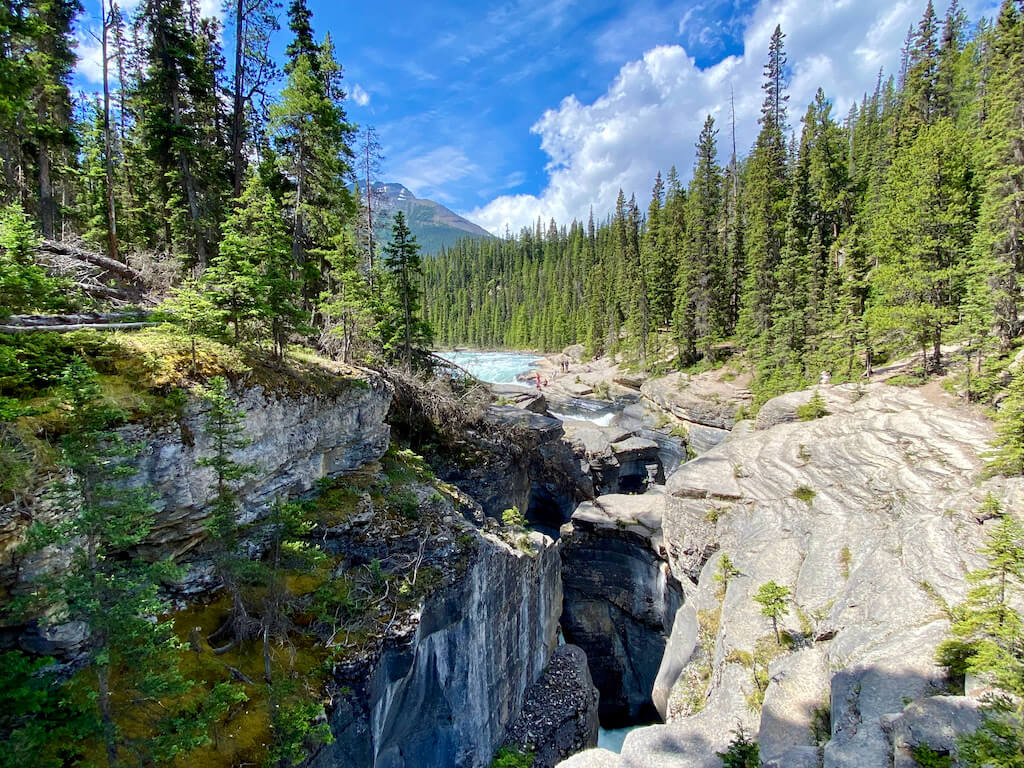
8. Saskatchewan River Crossing
The Saskatchewan River Crossing is the only place to buy gas anywhere on the parkway.
And the price gouging reflects that so be sure to gas up in Lake Louise before you head out.
There’s also a little cafeteria here if you’re starving.
Your best bet is to pack a picnic but head here to the cafeteria if you’re caught without food. It’s mediocre but it will do in a pinch.
You’ll find Saskatchewan River Crossing at the junction of Highway 93 and Highway 11.
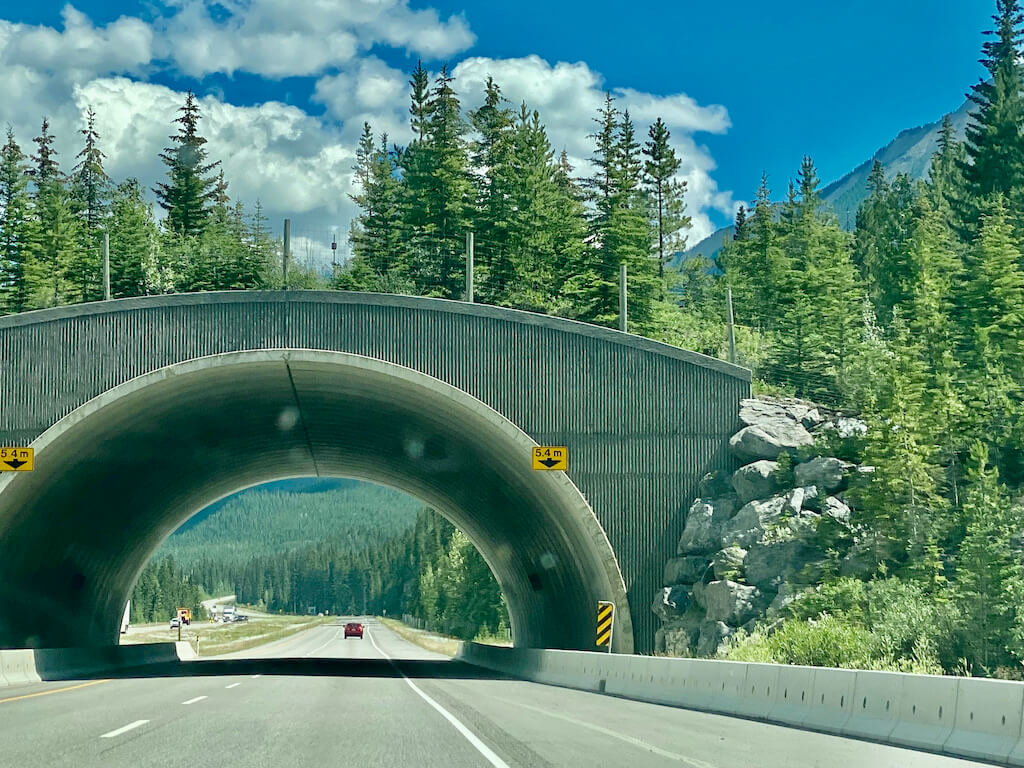
9. Graveyard Flats
This flat open flood plain was a popular spot for hunting parties to skin carcasses.
Why? It was easy to spot predators who were approaching for a free feed!
Eventually, there were so many animal bones here that the area was named The Graveyard.
Today, all the bones are gone but lots of driftwood remains.
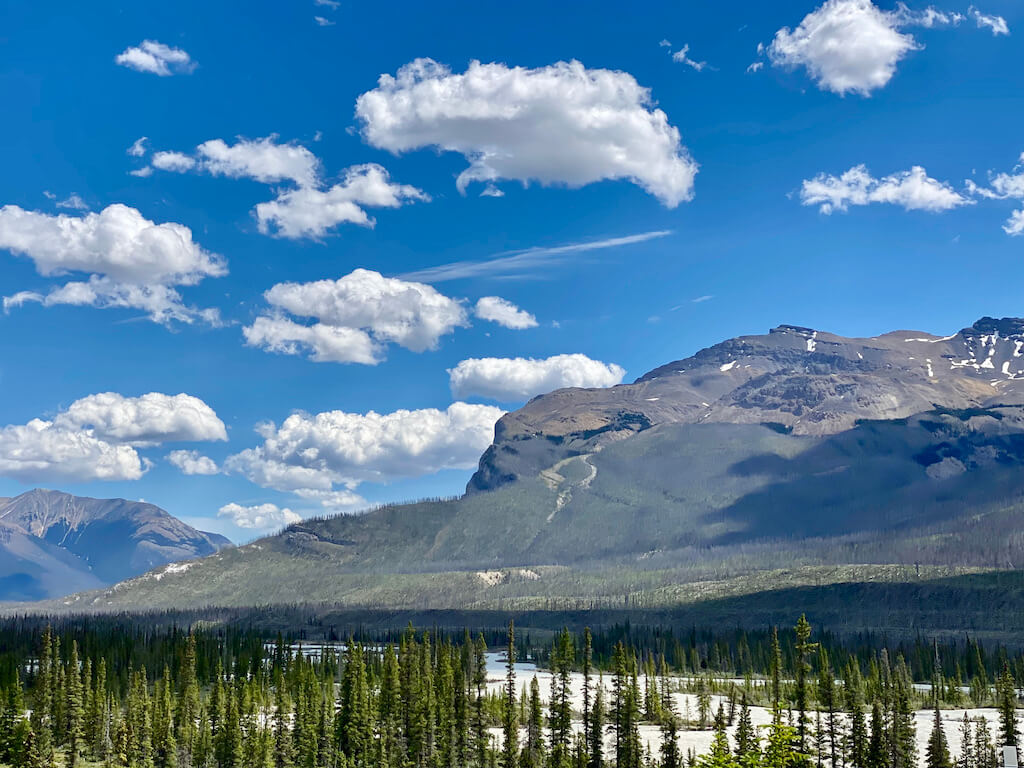
10. Coleman Day Use Area
This picturesque day use area is a great place for a picnic or rest. It’s directly across from Mount Coleman, home to lots of grizzly bears.
We spent a serene 15 minutes with our binoculars here, scanning Mount Coleman for mountain goats.
While we didn’t see any, they’re often here!
How can you tell the difference between mountain goats and Bighorn sheep?
One difference is that the mountain goats are white and the Bighorns are a dirtier brown. It’s the easiest way to tell.
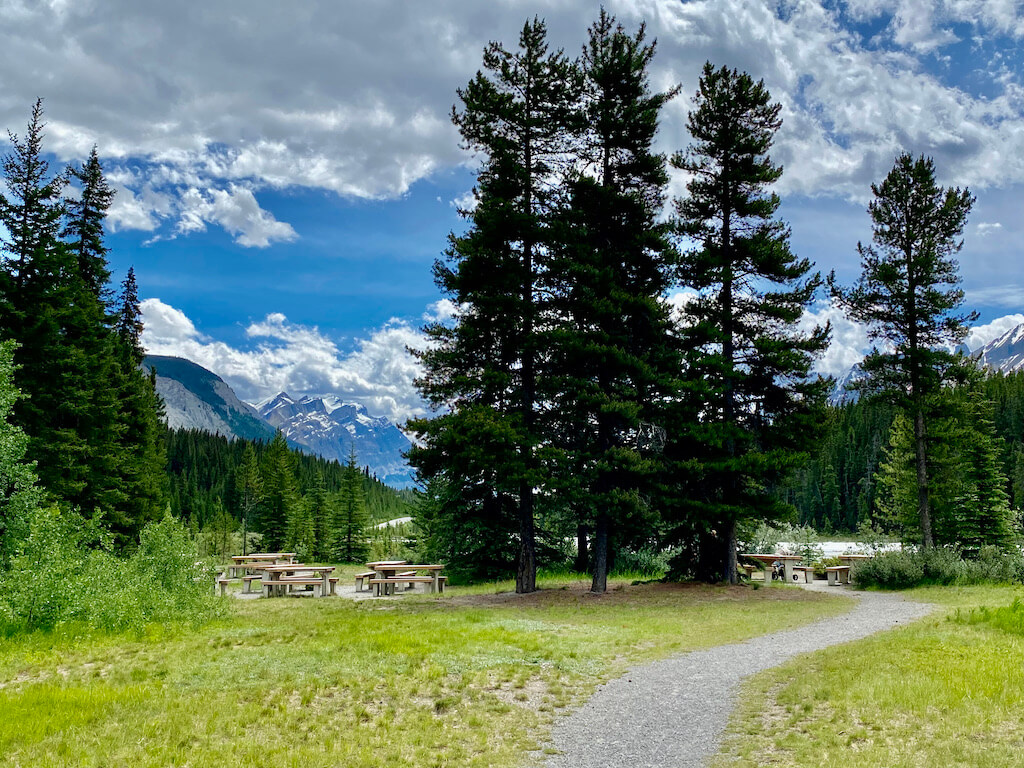
11. Weeping Wall
The Weeping Wall is located at the base of Cirrus Mountain and is so called due to the trickle of waterfall that flows here from glacial melt year-round down the cliffface.
In summer, you’ll see waterfalls flowing. In winter, the gigantic frozen waterfalls here are a draw for ice climbers.
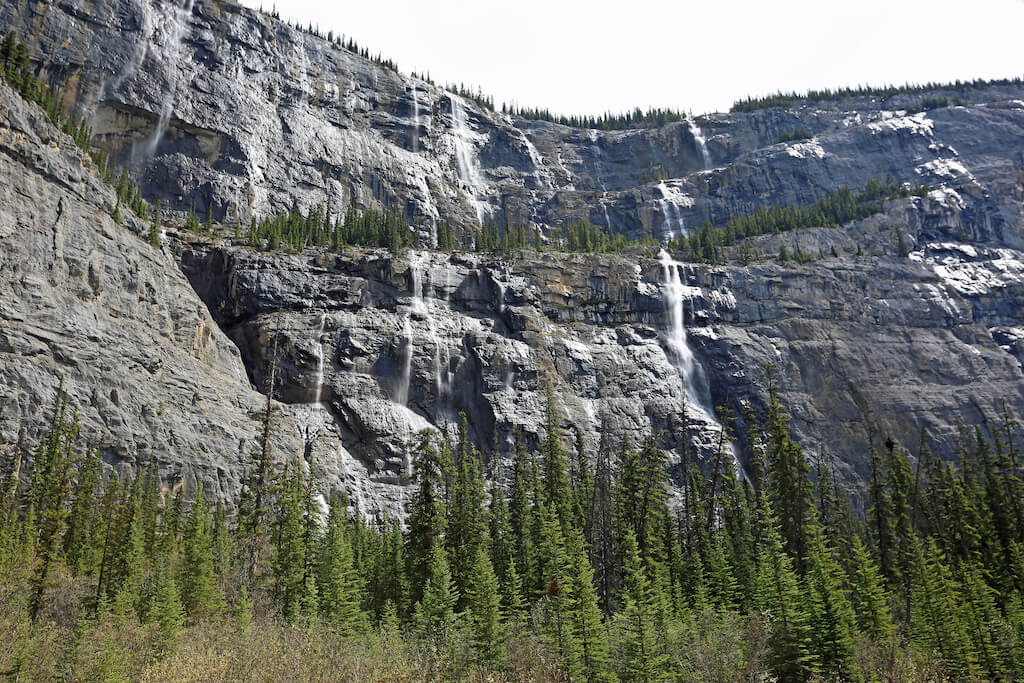
12. Bridal Veil Falls (at Big Bend)
Take the pull out here as you come around the Big Bend to get an up close and personal view of Cirrus Mountain.
You can walk right to the end of the viewpoint to see Bridal Veil Falls. It’s hard to miss the long stream of water down the mountain side.
The amount of water varies depending on the season.
You can also capture an incredible view of the North Saskatchewan River Valley here on your camera as you look back at the road spooling out back the way you came.
With more time—and to enjoy a second waterfall—consider stretching your legs with an easy out and back walk to Panther Falls.
You can walk to the trailhead from the same parking lot.
13. Parkers Ridge
You might feel the air cooling down at this point on your drive as you near the famous Athabasca Glacier.
Be sure to stop in the parking lot on the left for Parkers Ridge. If you have some time, walk all the way up to the ridge for the stunning view at the top.
It’s a slow gradual climb; plan on at least two hours round trip for this 4 mile moderate hike with 1,1108 feet of elevation gain.
The reward for this trek along this switchback trail is a stunning view of the Saskatchewan Glacier flowing into the ice river in the valley.
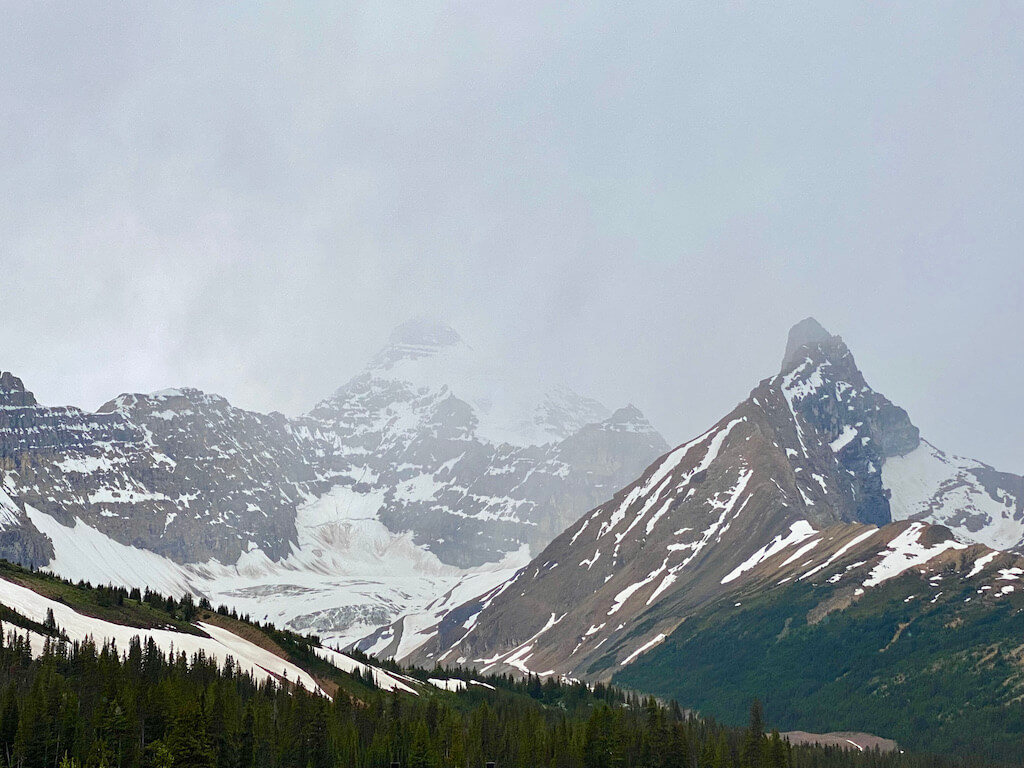
14. Columbia Icefields
The Athabasca Glacier here at the Columbia Icefield is the most dramatic site on the parkway.
You’re officially inside Jasper National Park now.
What is an icefield exactly? It’s like a lake made of ice. And this particular icefield covers 125 square miles!
This area gets 23 feet of snowfall annually.
The main attraction here is the giant Athabasca Glacier, which is unfortunately melting and shrinking at a rate of more than 15 feet each year.
In fact, 175 years ago, it covered the area where the parking lot is in the photo below. So see it while you can!
There are several ways to do this. You can take a bus tour that takes you out onto the glacier and includes a walk. Check pricing and availability on the bus tour here.
It’s an incredibly popular activity. Just be aware there was a serious bus accident a few years ago which has left some (including me) to reconsider this activity.
When you reserve a tour, you can also include a visit to the Skywalk—a transparent platform over the cliff a few minutes down the road (see #15 below)—or even book a guided hike independently if you’re fit and feel confident hiking at this altitude.

15. Glacier Skywalk
You can reserve a ticket with or without a bus tour onto the Athabasca Glacier at Columbia Icefield’s visitor center.
But getting onto this transparent platform suspended about the Sunwapta River requires you to take a 5 minute bus ride up the road from the visitor’s center and back. Be aware there’s no glacier view from the platform.
There’s unfortunately no place to park at the skywalk and no way to walk out onto the platform unless you have a paid ticket.
It’s $34 CAN for this experience (kids go free) which seems a little pricey to stand briefly on a platform.
But it also offers an impressive valley view so you decide!
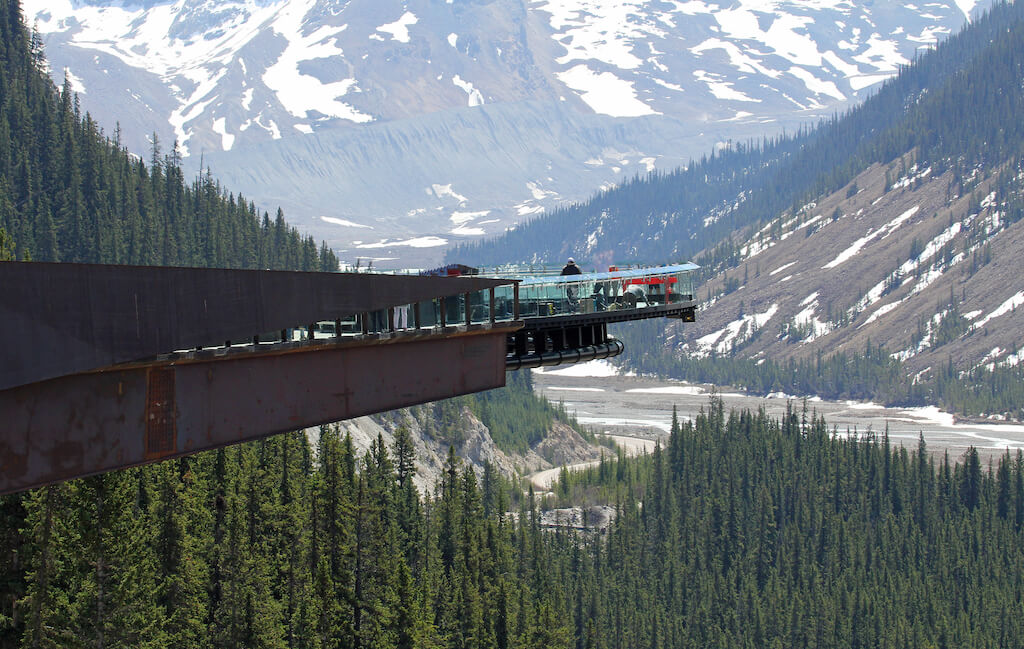
16. Tangle Creek Falls
It’s only an hour’s drive into Jasper from the Columbia Icefields from here but there are so many more beautiful places to see along the way!
As noted earlier, the Columbia Icefields makes a good turnaround point if you’re day tripping this drive.
But if you’re overnighting in Jasper, be sure to stop to see gorgeous Tangle Creek Falls next.
If you visit in summer as we did, when glacier melt is high, these falls are particularly impressive to see as the water rushes over the limestone cliffs here.

17. Stutfield Glacier
Named after Hugh Stutfield, an early explorer here, this is one more glacier in the icefields that drops 3,000 feet!
Be sure to park at the observation area to fully appreciate the craggy rock of this picturesque glacier. There’s a set of double icefalls here.
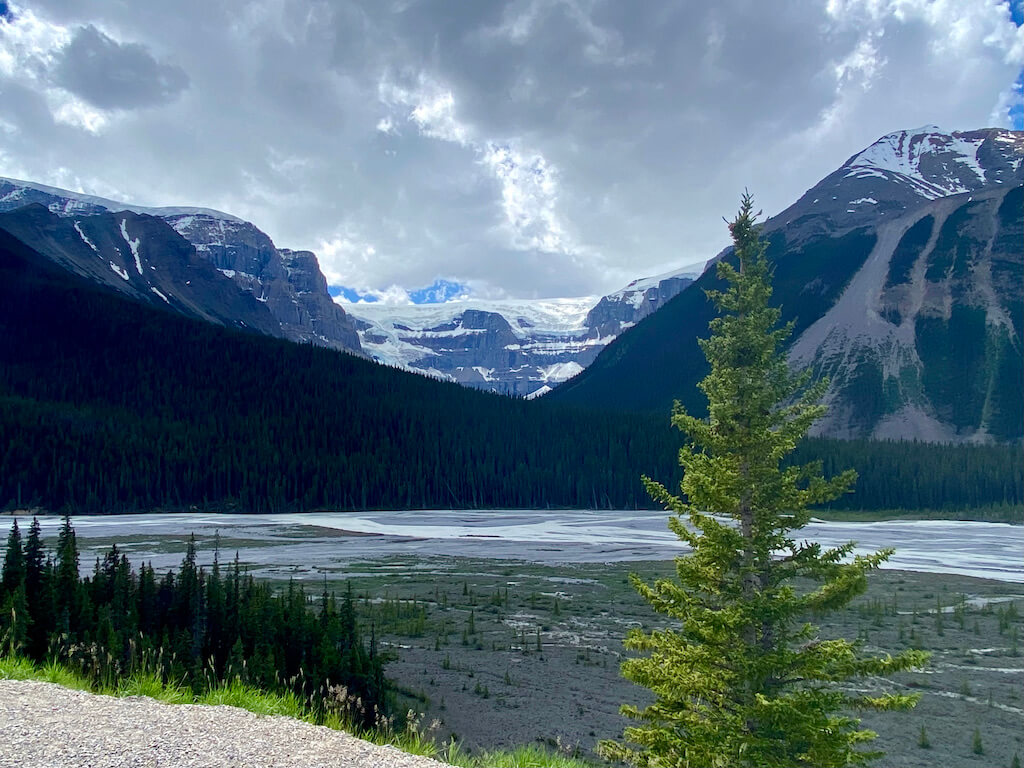
18. Sunwapta Falls
Sunwapta Falls is a must-see. This is a massive waterfall!
So take the turnoff from the parkway and head into the nearby carpark.
It’s just a short, easy few minutes walk from there to see the powerful falls.
With more time (about an hour), you can also take a longer walk to the lower falls and the beautiful pool there.
You’ll also see the resort right at the turnoff which is a great spot for a snack or a restroom break.
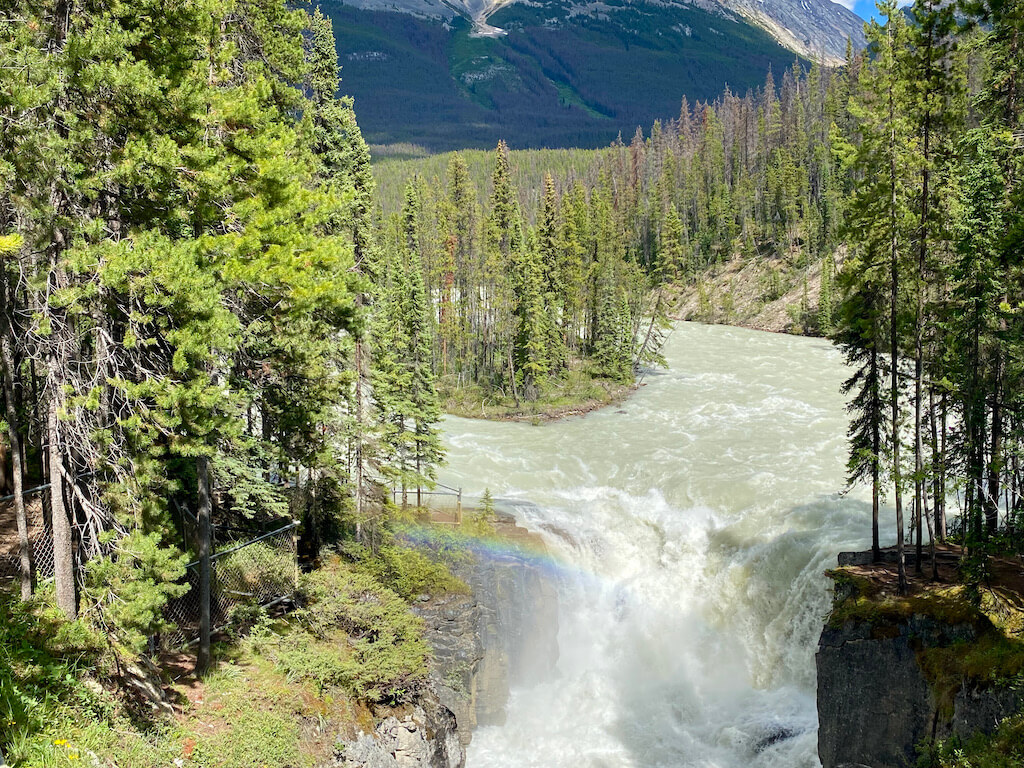
19. Mount Christie Viewpoint
There’s a great pull out to snap a photo of three singular mountain peaks here: Christie, Friett, and Brussels. Mt. Christie is the highest.
Mt. Christie was named after William Christie, a Canadian explorer and politician.
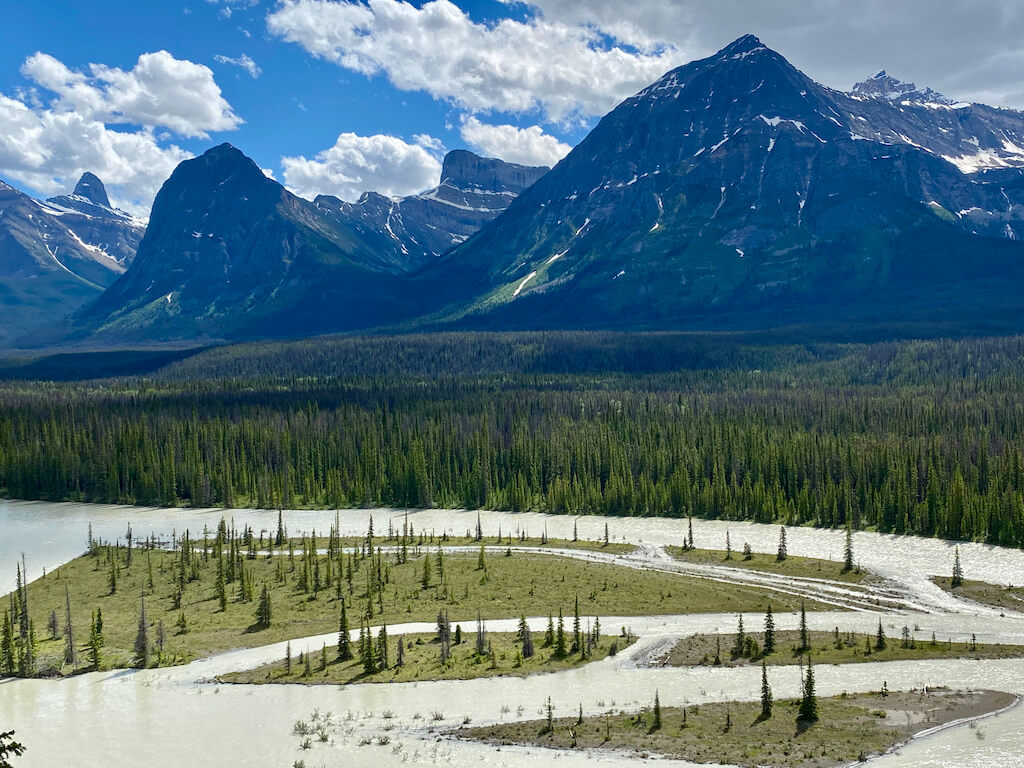
20. Athabasca Falls
Stunning Athabasca Falls is definitely a stop you won’t want to miss!
In my opinion, it’s right up there with Peyto Lake and the Athabasca Glacier earlier on the parkway as one of the most dramatic sights.
This is where the Athabasca River pours with full force into a narrow gorge.
If you’re here when there’s lots of snow melt, it’s an incredible sight with the mountains in the background.
It’s just a short walk from the parking lot down a paved trail to see this spectacle. With a little more time, walk down to the Lower Falls (less than a mile).
21. Horseshoe Lake
Horseshoe Lake is a pristine litte blue green lake where you’ll typically see very few people.
When we visited, the only other visitors were putting in a kayak.
Plan on a quick half hour visit to do this easy 1 mile loop trail with a few minutes to take in the view here.
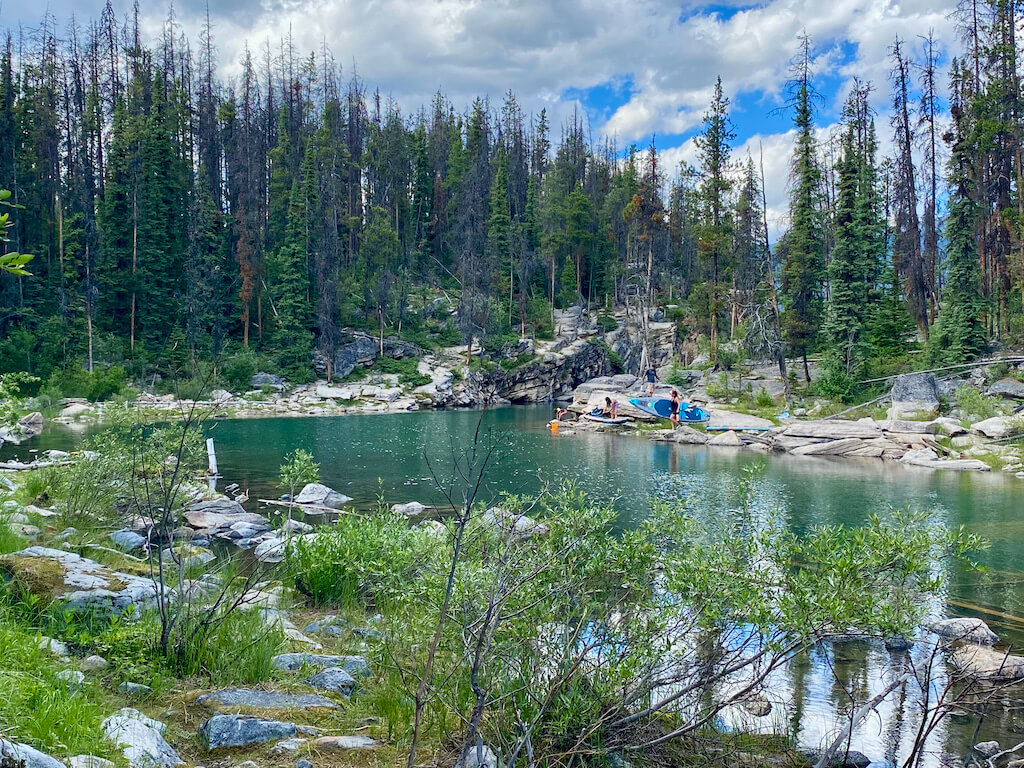
22. Mt. Edith Cavell
Mt. Edith Cavell was one of my very favorite sights on our two week trip to the Canadian Rockies!
For just a short hike, it’s a big pay-off to be able to walk right to the toe of a glacier.
You’ll take the incredibly scenic Path of the Glacier, an easy 1.1 mile out and back rail right up to it.
Sometimes in summer, you can even see and hear chunks of ice fall off Cavell glacier.
However, if you’re day tripping this drive from Lake Louise or Canmore, you likely won’t have time to for Edith Cavell…unless you skip most of the earlier stops to make this one of your main events.
You’ll need to plan on a 20 minute driving detour off the parkway from the turnoff to arrive here and at least an hour to do the short walk and gawk at the glacier.
If you’re staying in Jasper, consider saving this for a separate day on your itinerary, particularly if the Cavell Meadows Loop is open and you’re up for a longer hike.
The Meadows Loop is a moderate hike and a spectacular place to see wildflowers.. Plan on about 3.5 hours and an elevation gain of 1,879 feet.
However, due to the elevation, the trail may not be open until late July when the snow has melted here. We were so sad it was closed during our visit.
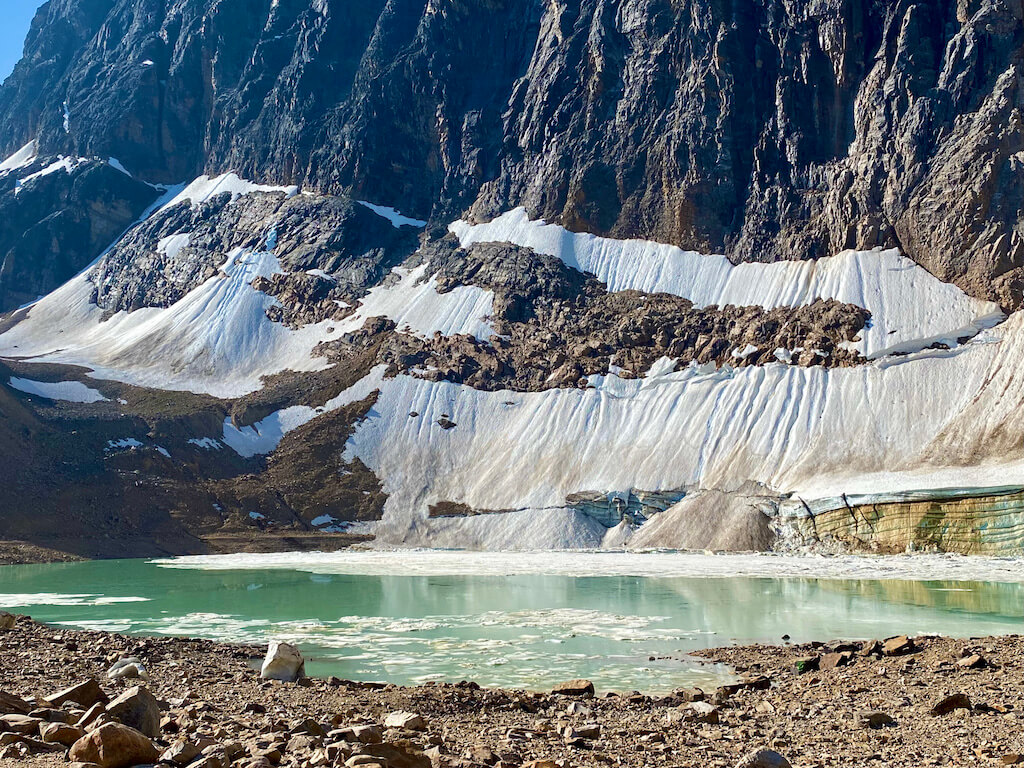
23. Jasper
You’ve made it to the end of the parkway in Jasper!
This gateway to Jasper National Park feels much less crowded than Banff or Lake Louise but it gets plenty of summer visitors.
We spent a week in a wonderful little cabin here right at the edge of the rushing Athabasca River and never wanted to leave.
If you’re staying in Jasper, I highly recommend hiking Valley of the 5 Lakes as well as dramatic Maligne Canyon.
Definitely also book a boat cruise on Maligne Lake to see Spirit Island, go river rafting on the Athabasca River, and enjoy a soak at Miette Hot Springs…just to name a few of our favorite experiences.
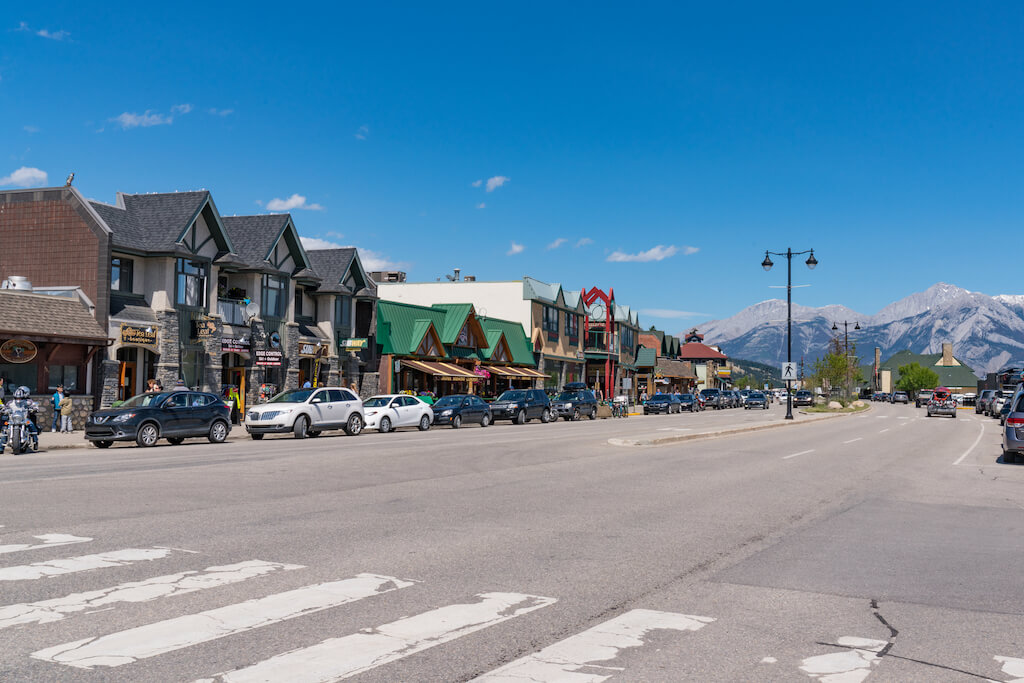
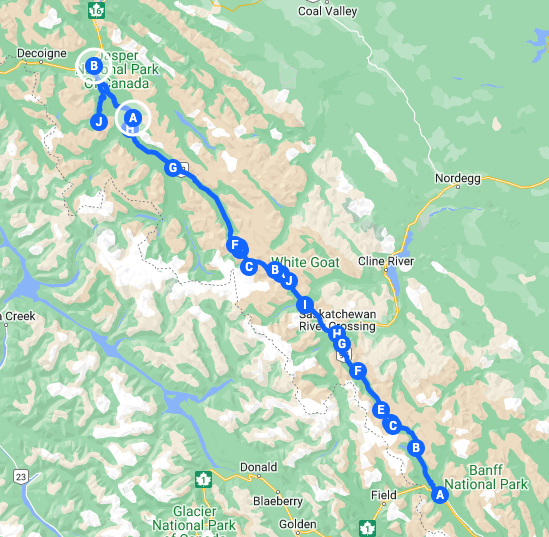
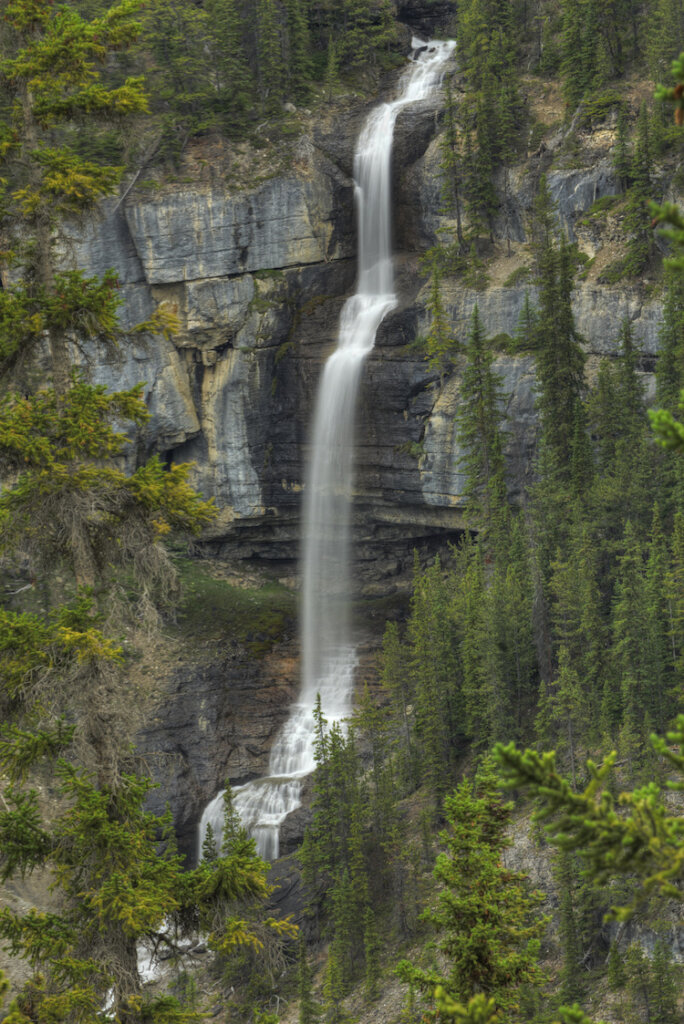
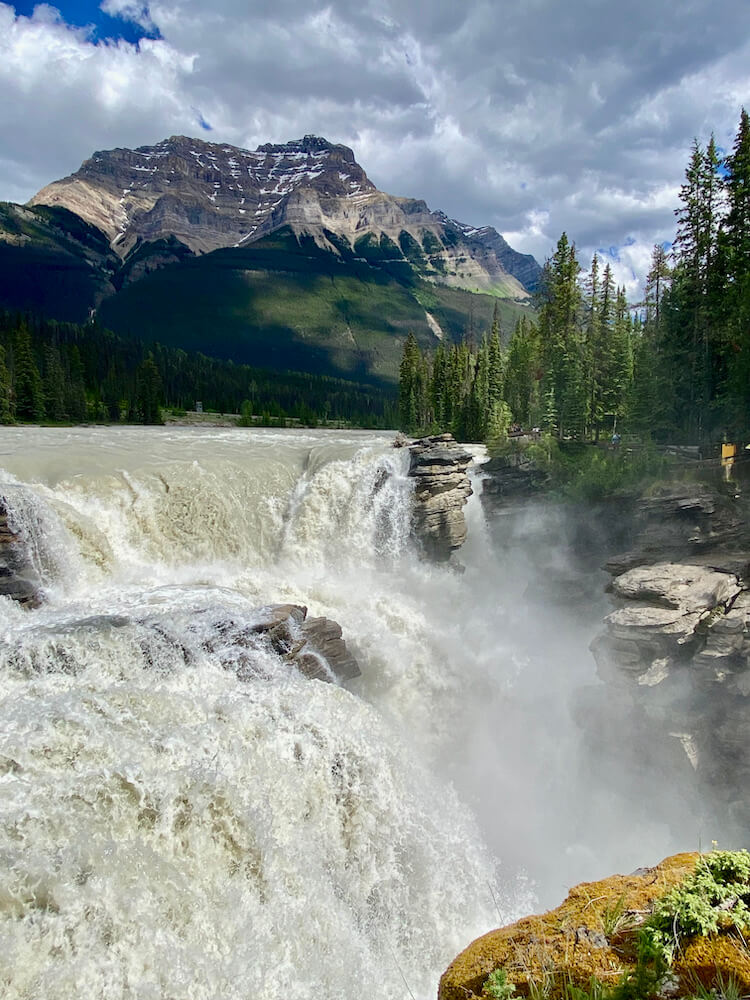
Leave a Reply